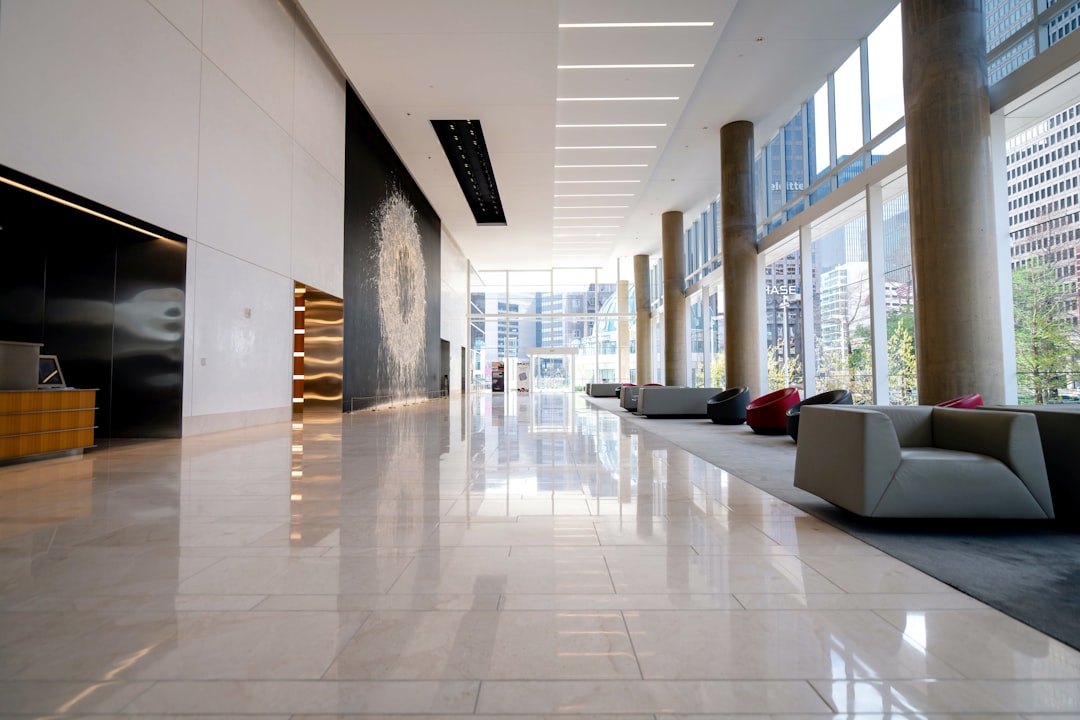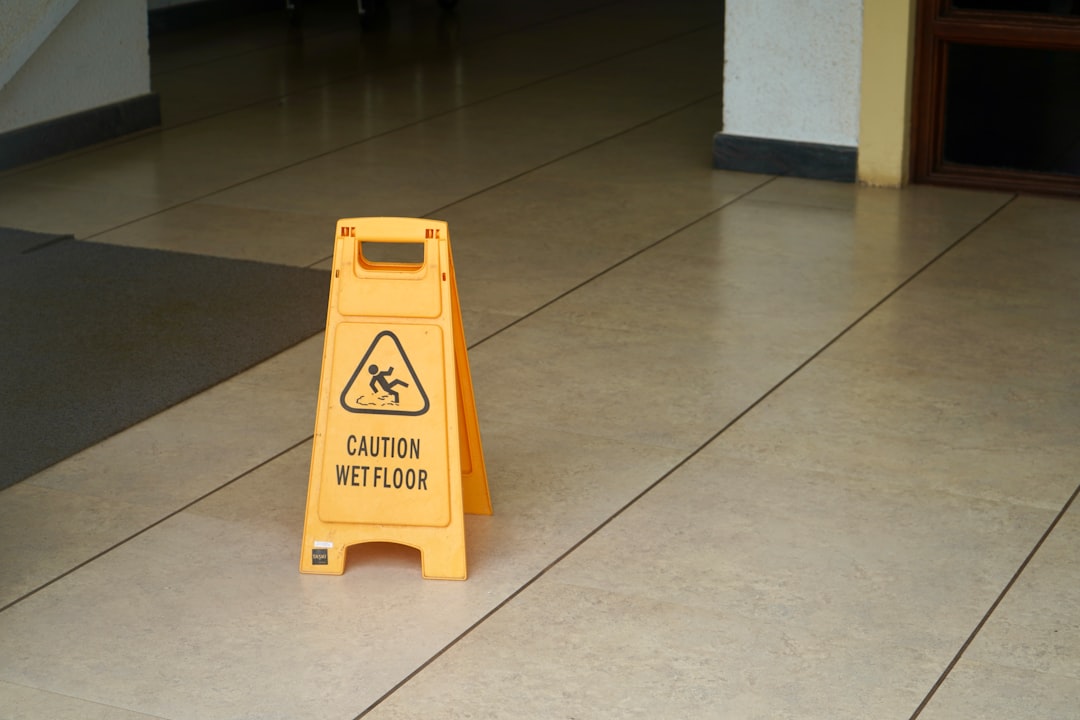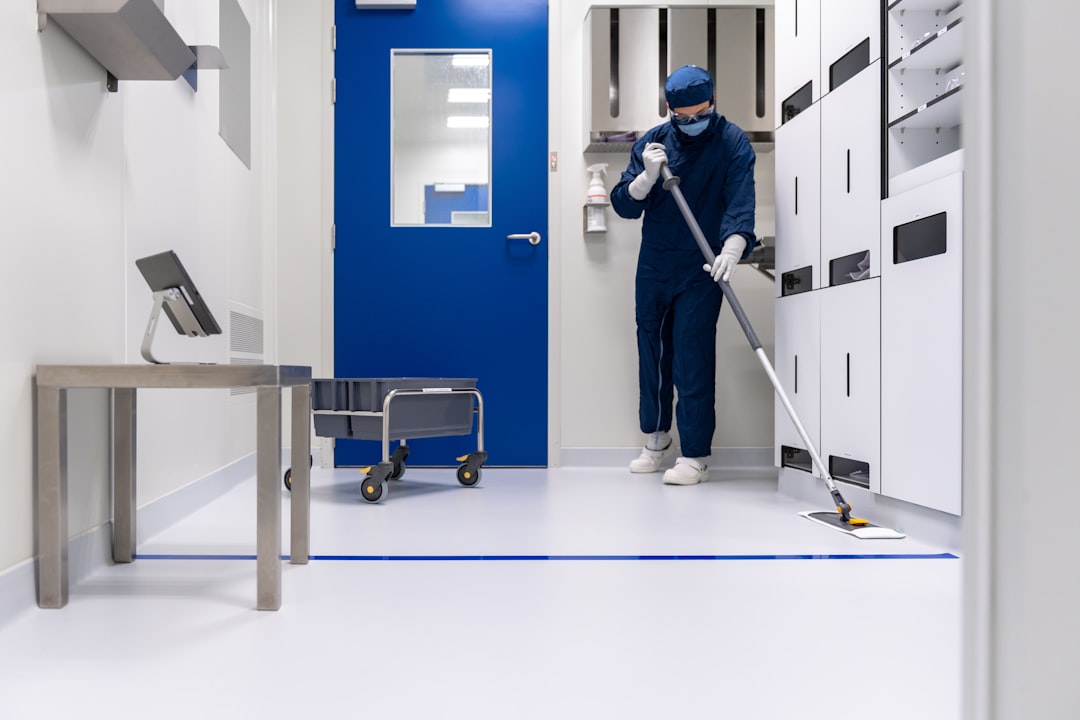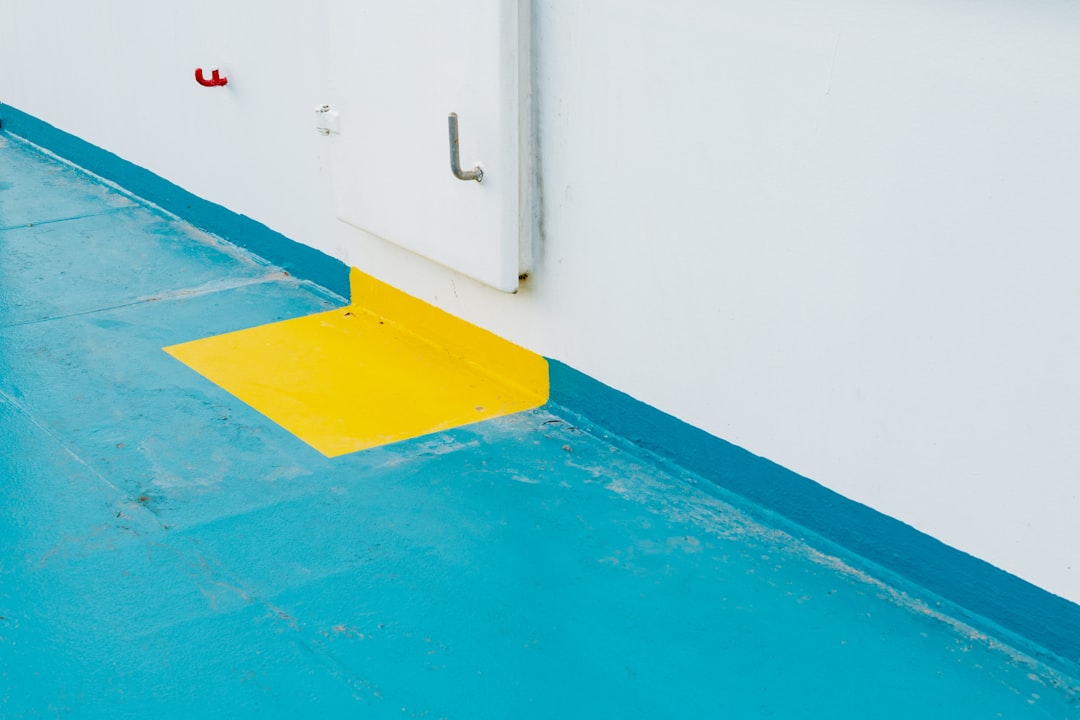

Engage prospects with a scan and streamline customer engagement with FREE QR code marketing tools by Sona – no strings attached!
Create a Free QR CodeFree consultation

No commitment

Engage prospects with a scan and streamline customer engagement with FREE QR code marketing tools by Sona – no strings attached!
Create a Free QR CodeFree consultation

No commitment

QR codes bridge the gap between physical touchpoints and digital outcomes, making it easier to achieve real business goals like instant service booking, transparent engagement, and feedback collection. In commercial floor cleaning, where schedules are tight and teams are dispersed, a scan-first approach brings clarity to moments that previously relied on phone calls, paper slips, or ad hoc emails. When a property manager can scan once to book, verify, or review, your company eliminates friction and captures intent the moment it appears.
Many commercial cleaning firms lose high-value prospects simply because their interest is not captured; for example, potential clients may look at onsite materials, but if there is no digital follow-through, those leads become invisible and go untracked in the CRM. QR codes solve this blind spot by turning every flyer, invoice, and equipment tag into a digital entry point. The result is a connected experience that reduces manual errors, accelerates decisions, and brings previously anonymous engagement into view for sales and operations leaders.
This approach empowers growth marketers, operations leaders, and account teams in commercial floor cleaning companies to modernize workflows and streamline communication at every stage. Tools like Sona QR automate code generation, journey tracking, and CRM integration so that every scan becomes a measurable signal, but the real win starts by linking each scan to an action that matters for your business.
Instead of paper-based maintenance logs, place QR codes on autoscrubbers, burnishers, and extractor equipment. Staff scan to access safety logs and maintenance checklists; customers scan to view last-cleaned timestamps and service scope; managers receive instant digital confirmations and photos for audit trails. This eliminates paperwork, improves compliance, and creates transparent records that are accessible from anywhere.
Similarly, replace printed brochures with QR-driven digital landing pages that include pricing tiers, certifications, and case studies. Prospects can request a site walkthrough or instant quote with a single scan, and your sales team receives structured, trackable data instead of relying on speculative follow-ups based on casual conversations.

QR codes address persistent challenges that slow down sales cycles, reduce service visibility, and create data gaps between field work and office systems. In an industry where the proof of service, compliance documentation, and timely communication are critical, QR codes provide a reliable mechanism to convert physical interactions into digital actions.
They also match modern buyer expectations. Property managers want to schedule, verify, and evaluate services without downloading new apps or navigating complex portals. QR codes give them that convenience while giving your company accountability and measurable data across entryways, job sites, vehicles, invoices, and signage.
For commercial floor cleaning teams, QR codes accelerate service cycles, reduce the risk of missing high-intent inquiries, and replace guesswork with reliable signals. Instead of hoping a property manager calls later, you make it effortless to act now, and you capture the data needed for better forecasting and follow-up.

QR codes can be configured to meet a range of objectives across sales, service, and operations. Selecting the right format ensures each scan produces the intended outcome, whether that is a quote request, a training view, a checklist submission, or a payment.
Dynamic QR codes are ideal for campaigns and operational assets that may change over time. Static QR codes are best for evergreen content like long-lived safety resources. In practice, most commercial cleaning companies use a mix of both to balance flexibility, tracking, and permanence.
With a platform like Sona QR, you can generate, manage, and update these formats in a single dashboard. You can also tag destinations with UTM parameters, map codes to accounts, and apply branding to increase trust and scanning rates.

Growth in commercial floor cleaning often hinges on surfacing interest where it has historically been invisible. The places where clients, staff, and prospects already interact with your brand are precisely where QR codes can generate measurable outcomes. When you turn those touchpoints into digital gateways, you create a continuous pipeline of engagement data and opportunities.
Focus on placements that align with real behavior. Codes near entryways or elevators capture tenant feedback at the moment of experience; codes on invoices convert payment reminders into rebookings; codes on equipment connect staff to safety and training resources without delay. It is about matching the environment with the action you want.
By mapping offline engagements to digital actions, commercial cleaning companies finally see the path from prospect visit to signed contract. That clarity enables better budget allocation, stronger account-based marketing, and proactive service improvements where the data indicates friction.

Every step in the commercial cleaning buyer and service journey presents a QR opportunity. The following use cases address common pain points, convert passive attention into action, and produce measurable outcomes that improve both revenue and retention.
Start with a few high-impact use cases that match your goals, then expand based on data. Over time, you will build a network of QR-powered interactions that support the full lifecycle: awareness, evaluation, purchase, service, and renewal.
When implemented consistently, these use cases shorten service cycles, support safer operations, and increase conversion rates. The effect compounds as scan data informs better messaging, smarter placements, and improved workflows.
Each scan is a signal. It tells you who engaged, in what context, and often why. By deploying unique QR codes across touchpoints, you can automatically segment your audience and fuel precise retargeting through email, SMS, and paid ads. This turns fleeting interest into ongoing conversations with the right people at the right moments.
Commercial floor cleaning companies should segment by buyer role and lifecycle stage. For example, distinguish between property managers exploring options, procurement teams seeking documentation, and existing clients verifying services. Use these distinctions to tailor follow-up and upsell opportunities, such as seasonal deep cleans or facility-wide refresh programs.
With Sona QR, each code becomes a smart entry point into your funnel. You capture real behavior rather than relying on assumptions, enabling retargeting that reflects what people did, where they did it, and how ready they are to take the next step.
QR codes are more than links. They are connectors that unify offline and digital campaigns and reveal which assets and environments drive engagement. When every printed material, vehicle, or display can be measured, marketing and operations align around a single view of the customer journey.
For commercial floor cleaning, this means tying together direct mail, building signage, equipment tags, event materials, and digital placements. Use QR codes to attribute outcomes to specific channels and to create a consistent path from first impression to booked service.
Together, these channels form an offline-to-online funnel where every scan is an insight. Using a centralized platform like Sona QR, you can manage codes at scale, monitor performance across campaigns, and sync engagement with your CRM for consistent reporting.
Rolling out QR codes is straightforward, but planning with intent magnifies results. Start with a clear goal for each placement, ensure the destination delivers immediate value, and verify that scan data flows to systems where your teams can act on it. A disciplined approach prevents random acts of QR and turns each code into a reliable driver of bookings, feedback, or compliance.
Below is a practical checklist tailored to commercial floor cleaning. Use it to design, deploy, and optimize campaigns that connect day-to-day operations with measurable growth.
Define your primary objective, such as verifying service check-ins, capturing quote requests, or collecting tenant feedback. Align each code with a specific outcome and audience segment, for example, a deep-clean booking page for property managers or a feedback survey for tenants after a lobby polish.
Identify the analog process you want to replace. If your team currently leaves paper service cards or plays phone tag to book follow-ups, a scannable rebooking page solves both the client experience and the data capture problem in one step.
Decide between static and dynamic codes based on your need for tracking and flexibility. Use dynamic, trackable codes for campaigns and operational assets that require ongoing updates or audience segmentation. Reserve static codes for permanent safety resources or evergreen documentation.
If you plan to test offers, swap destinations, or attribute revenue by placement, dynamic is the right choice. It will let you adjust your approach without reprinting materials and will feed the analytics you need to optimize.
Brand your code with a logo, clear frame, and a concise call to action, such as Scan to Book a Walkthrough or Scan for Completed Service Report. Ensure adequate contrast and sufficient size relative to viewing distance. Place the code where people naturally pause, such as at counters, entryways, or equipment storage areas.
Test across devices, lighting conditions, and angles. Validate that scans work from a realistic distance, that the landing page loads quickly on cellular connections, and that forms are mobile-friendly. Run a small pilot at a single site to gather feedback before scaling. Start creating QR codes for free.
Match placements to audience behavior. Use door decals and lobby signage for tenants and property managers, equipment tags and supply closets for staff, invoices and receipts for finance teams, and direct mail for new account outreach. For fleet vehicles, include large, high-contrast codes near the rear where stopped traffic can scan safely.
Stage your rollout in waves to compare performance by channel. Start with invoices and entry signage to capture both existing client actions and top-of-funnel interest, then expand to events and OOH ads based on early results.
Instrument your codes with UTM parameters and use a QR platform to monitor scans by time, location, and device. Analyze conversion behavior and identify drop-offs, such as high scan volume with low form completion on a particular page.
A/B test landing pages, headlines, or calls to action. Iterate on creative, placement, and destinations based on what the data reveals. Feed engagement data into your CRM, alert sales to high-intent scans, and update your placements and messaging to reinforce what works.
Success in commercial floor cleaning requires visibility from the first scan to the final invoice. Historically, teams struggled to connect offline engagement with digital records, which meant warm interest and upsell signals went unnoticed. QR analytics close that gap by providing attribution and context, not just raw scan counts.
The goal is to turn every scan into a data point you can use to forecast demand, allocate resources, and refine your marketing and operations. When scan events flow into your CRM and analytics stack, you can link them to bookings, service delivery, satisfaction scores, and contract renewals.
Advanced tools like Sona QR and Sona.com make this seamless. Sona QR captures real-world engagement and maps it to campaigns. Sona.com links QR scans with website visits, ad interactions, and CRM activity, giving you a complete picture of progression from first touch to booking. The result is a performance loop where offline actions fuel measurable growth.
Scaling QR impact is about consistent deployment, clear calls to action, and automation that keeps the conversation moving. Focus on the touchpoints that matter most, and make sure each scan leads to an immediate, valuable outcome for the scanner.
Train staff to promote scanning at the right moments, and standardize the experience so clients know what to expect. Over time, small improvements to design, placement, and follow-up can deliver substantial gains in engagement and revenue.
Creative examples include adding QR codes to green chemical containers that link to sustainability credentials and SDS sheets, and placing codes on staff badges that show proof of training and certifications. These uses reduce inbound inquiries, increase trust, and provide a quick way for clients to validate quality standards.
QR codes are strategic enablers for the commercial floor cleaning industry, solving practical frustrations around engagement visibility, missed prospects, and operational inefficiency. When you transform invoices, equipment, signage, and direct mail into scan-enabled touchpoints, you capture demand at the source and create a continuous loop of measurable interactions.
The result is a system where field operations and marketing share the same view of client behavior. Scans feed the CRM, analytics highlight the best placements, and automation ensures follow-up happens while interest is high. This alignment accelerates bookings, elevates service accountability, and improves retention through timely, personalized communication.
With modern QR platforms like Sona QR and analytics from Sona.com, commercial cleaning companies can deploy at scale, attribute outcomes to scans, and connect offline engagement to revenue. Start with one high-impact use case, such as invoice payments or service verification, then expand based on data. In a competitive market, the companies that make every scan count will win on speed, transparency, and client satisfaction.
QR codes have revolutionized commercial floor cleaning services by transforming routine maintenance into an interactive, efficient, and data-driven process. From enabling instant access to cleaning schedules and safety protocols to streamlining quality checks and customer feedback, QR codes enhance operational transparency and accountability. Imagine effortlessly tracking cleaning cycles, verifying task completion, and improving client communication—all through a simple scan.
With Sona QR, you can easily create dynamic, trackable QR codes that update in real time without the need to reprint labels or signage. This flexibility connects every scan to actionable insights, helping you optimize workflows, improve service quality, and strengthen client trust. Start for free with Sona QR today and turn every scan into a seamless step toward exceptional commercial floor cleaning service delivery.
QR codes enable instant service booking, transparent engagement, and feedback collection, reduce manual errors, accelerate decisions, capture high-intent signals, and provide measurable data that improves forecasting and follow-up.
QR codes allow property managers and clients to scan once to book, verify, or review services instantly without phone calls or paperwork, creating seamless digital pathways from physical touchpoints.
Dynamic QR codes are best for campaigns and assets requiring updates or tracking, while static QR codes suit evergreen content like safety resources; most companies use a mix of both for flexibility and permanence.
Place QR codes on equipment, entryways, invoices, service receipts, direct mail, flyers, vehicle signage, and facility areas where clients and staff naturally interact to create immediate action paths.
Services include instant quote requests, service verification with timestamps and photos, staff training access, feedback collection, scheduling, and access to compliance documentation.
Using QR platforms to capture scan data such as time, location, device type, and source, syncing with CRM and analytics tools to monitor engagement, conversion rates, and optimize placements and messaging.
Scan QR codes placed on brochures, invoices, entry signs, or direct mail that lead to booking forms or scheduling calendars, enabling instant and frictionless appointment setting.
Common uses include service verification, instant quote requests, staff training access, feedback surveys, payment portals, and rebooking options.
Unique QR codes segment audiences by role and lifecycle stage, feeding scan data into CRM systems to trigger personalized follow-up, retargeting, and upsell campaigns based on demonstrated intent.
Define use cases, choose static or dynamic codes, design and test codes with branding and CTAs, deploy across strategic channels, and track and optimize performance using analytics.
Use Sona QR's trackable codes to improve customer acquisition and engagement today.
Create Your FREE Trackable QR Code in SecondsJoin results-focused teams combining Sona Platform automation with advanced Google Ads strategies to scale lead generation

Connect your existing CRM

Free Account Enrichment

No setup fees
No commitment required

Free consultation

Get a custom Google Ads roadmap for your business






Launch campaigns that generate qualified leads in 30 days or less.
